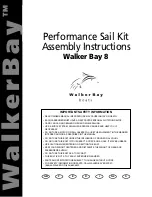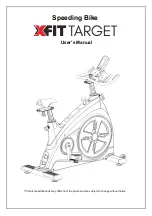
4.0
SAFETY PRECAUTIONS (CON’T)
4.
WIND
: Spraying during windy conditions is not usually practical because the
formulation will drift out of the intended area. However, under NO circumstances should
spraying into the wind be attempted. This may cause hazardous accumulations on the
machine or carrying vehicle.
5.
SAFETY EQUIPMENT
: In addition to any safety equipment that may be required by
the type of formulation which is being used, the following items should be mandatory for
each vehicle which carries this machine during fogging operations.
a. Fire Extinguisher, chemical-type rated for fuel fires.
b. First Aid Kit.
c. Eye Wash Solution.
d. Safety Glasses.
e. Container of Oil Dry Compound.
f. Gloves Rated for High Temperature.
g. Respirator Adequate for Formulation being used.
6.
CHILDREN
: Many spraying operations are performed in residential areas,
commonly at dusk. This presents the operator with the problem of children who are
attracted to the noise and/or mist being created. Children have been observed running
into and riding bicycles through the mist. The possible hazard lies in the toxic effect of
some formulations, the severity of which depends upon the chemical used, mist density
and the length of time of direct exposure.
IT IS THE OPERATOR'S RESPONSIBILITY TO DISCOURAGE ANYONE FROM
PLAYING IN THE MIST OR BEING NEAR THE MOVING VEHICLE.
7.
FORMULATIONS
: Ensure that formulations are applied only in strict compliance
with the formulation label as well as local, state and federal regulations and that these
formulations are dispersed only by trained personnel of public health organizations,
mosquito abatement districts, pest control operators or other qualified personnel.
a. Always comply with any requirements for protective clothing, goggles, gloves,
Facial masks or respirators required on the formulation label.
b. Do not exceed the dosage set forth on the registration label of the insecticide to
be used.
c. Always store formulation in its original labeled container.
14















































